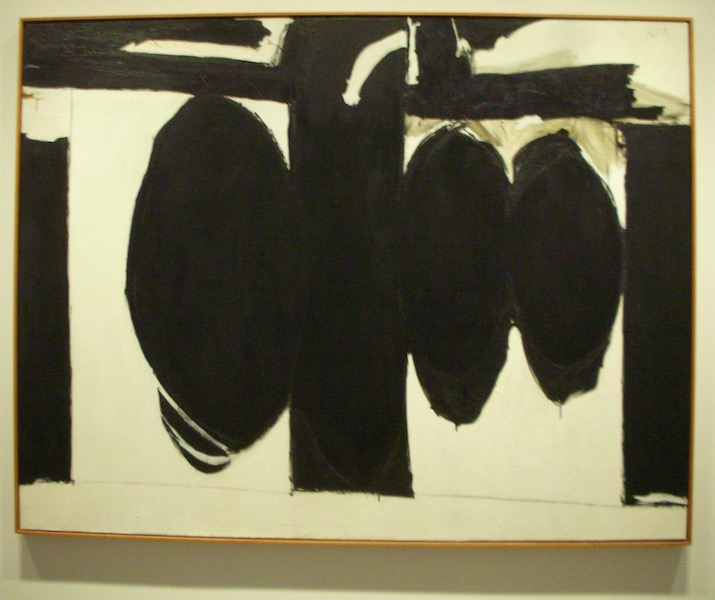AND SPEAKING OF MOTHERWELL . . .
In 1959, at the age of sixteen, studying baboons with my father at the Amboseli game reserve in Kenya, I encountered Eliot Elisofon (1911-73), the noted Life photographer. He was there on assignment for an article on Literary Africa. Among other things he needed a photo to match a line from Hemingway: “Three vultures squatting obscenely.” As it happened, we knew where there was a fresh elephant kill–vultures galore. We took him. He got his shot. He was delighted, and for the next few days I became his guide and driver. He paid me with instruction. He composed his shots using a tripod, and when he had something going he would step aside for five seconds so I could peer through the viewfinder and see exactly what, out of all the information in front of us, he was selecting. I was at his elbow when he took the photo below.
What struck me was how tightly he composed the shot—the foreground compressed into a thin, hard shape of white ground along the bottom supporting the dark solidity of the herd—and then that glorious cascade of light and diagonals falling from the central adult down over the standing calf and then the recumbent, contrary, watchful one, all against the loose, wavy pattern of the trees. The long telephoto lens compressed the whole into a hip, 50s-style flatness.
It was a key experience for me. Until then, art had always been distant: I’m here, and the Mona Lisa is over there. In perhaps a minute of cumulative glances over several days, Elisofon showed me how art and life happen in the same place.
But there are other lessons here. It was only years later that I happened to look at the Elisofon and Robert Motherwell’s “Elegy to the Spanish Republic #57,” painted at about the same time, in close proximity. Not the same thing, of course, but not quite different ones either. The longer you look, the more similarities you find. Begin with the white shape along the bottom, and the tusk shapes in both pieces.
This post is a reprise of September 15, 2012
Copyright © 2016 · All Rights Reserved · Stan Washburn

